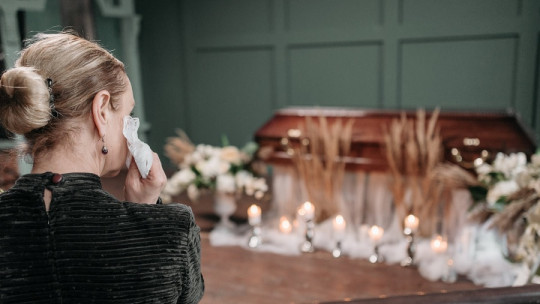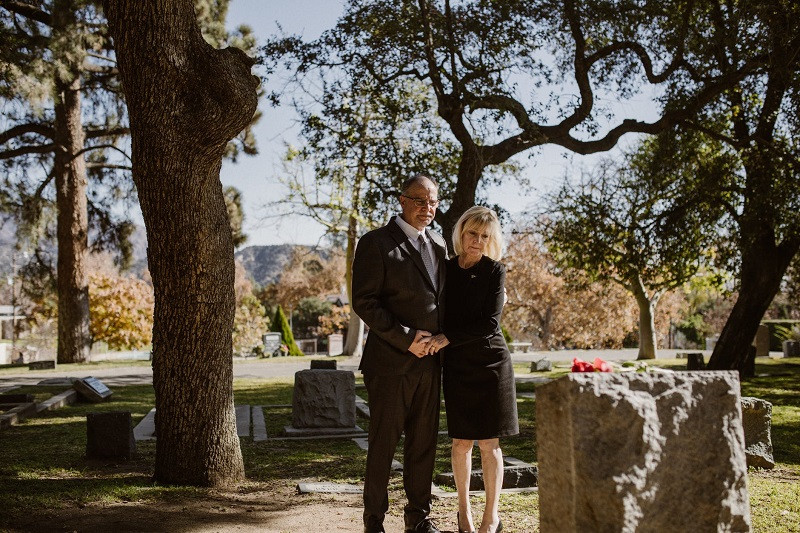
Grief is a normal process that people often go through after a loss, such as the death of a loved one. This experience of managing emotions is necessary so that the subject can overcome and adapt to the new life without the deceased.
The problem occurs when the evolution of this grief is not adequate and ends up giving rise to a vicious circle of discomfort that generates even more emotional pain; In cases like this, what is known as complicated or pathological grief arises, where we will observe similar but more intense symptoms, of greater severity and with a longer duration. That is to say, the subject’s functioning and quality of life will be worn out, and he will not be able to carry out the activities that he previously did.
In this article I will explain the main characteristics, phases and stages of normal grief and complicated grief so that it is easier to understand their differences. and what variables are presented as predictors of a pathological development of the grieving process.
What is normal grief like?
Grief “plain” is a normal process that can appear when there is a loss that has a strong psychological impact, whether it is the death of a loved one, the breakup of a relationship, the loss of a job or the loss of a part. of the body due to an illness, among other similar experiences.
So that A period of adaptation begins where the subject may show emotional, physical, cognitive, relational, and behavioral symptoms. In general: you are in a transition stage between a moment in life in which you took for granted that you could have a person, pet or important object, and another in which you no longer have access to it. He must adapt to a life without what he developed an emotional bond towards.
In this way, grief is not always a pathological process; On the contrary, in most cases it is necessary for the individual to overcome the loss and adapt to the new life. The subject You must go through different stages to be able to cope with the loss and be able to continue with your life..
The evolution of grief can be different for each person, but it has been observed that in the case of the death of a loved one, several characteristic phases normally appear: First there is the initial phase in which a shock occurs at the news of the death. or loss, in this case there may be emotional lack of control or quite the opposite, blockage; then comes a phase of intense pain or loss (at this point the subject is more aware of the loss, a fact that represents an increase in pain, they can react by avoiding any stimulus that reminds them of the deceased) and the resolution phase (this phase involves adaptation and acceptance of loss).
Stages of normal grief
There are different authors who have proposed different stages that individuals go through when faced with loss.. These stages can have different durations depending on the individual and can also present a different order, going back to previous stages, and then being able to move forward.
A well-known author on this topic is Elisabeth Kübler-Ross, who proposed 5 stages in the grieving process. Both family members and the subject themselves who see their death imminent can go through these stages. They are the following.
Characteristic symptoms of normal grief
A series of symptoms appear that are normal in the grieving process and that They help the subject to cope with the loss, adapting to it and overcoming it.
At first we observe agitation, or the opposite, emotional dullness. Death begins to be accepted and grief and pain arise, and after a few weeks depressive symptoms, anxiety and irritability may appear. Finally, there will be the feeling of fullness, in which the person is able to remember the past without feeling very bad.
On the other hand, It is typical that in the early phases the symptoms are more physicalto later predominate more psychological ones.
The distinction between normal grief and complicated grief
Once we know the characteristics and symptoms of normal grief, in the case of complicated grief these are not usually qualitatively different, although their timing and intensity does change. That is, in pathological grief we will observe that these symptoms last longer and instead of improving, they remain the same or even worsen, increasing their emotional impact.
Thus, The characteristic features of pathological grief are the following: feeling of deep sadness and permanent thinking about the loss, difficulty concentrating in the different areas of your life, extreme attention focused on the memory of the deceased, extreme desire and longing, difficulties accepting death, social isolation and feeling of alienation, resentment over loss, feeling that life has no meaning, decreased self-confidence, and difficulty enjoying life.
Other behaviors that we can observe in complicated grief are: difficulty carrying out activities of daily living, feeling of guilt, and in the most extreme cases, suicidal ideation (desire to die, often mediated by the religious belief of being able to take one’s own life and thus reunite with the other person).
As we have already seen, an important criterion in the distinction between the two types of grief is related to the time of the process. It is after 12 months that we can consider that grief is complicated, although it is not the only variable that the therapist will take into account; It has to assess other characteristics of the subject, since, as we have said, normal grief can also have different durations without this fact being pathological. Therefore, clinical judgment will be important to make a diagnosis of persistent complex grief, taking into account the way in which the person experiences the discomfort.

Another factor that helps distinguish between the two processes is how they start. In normal grief, the symptoms usually appear at the moment or a few days after the loss occurs; instead, In the case of pathological grief, this can be observed weeks or months later, being considered delayed grief.giving a denial of grief.
In the same way, as happens in any other disorder, we must assess how the alteration affects the functionality of the individual, in his social, work, family life… since this loss of adaptation in the activities of his daily life will be what tells us. the presence of a pathology.
Also differences have been observed in the denied aspects. In the case of the normal process, the subject may deny some circumstances related to the death or negative characteristics of the deceased, idealizing. On the contrary, in complicated grief this denial is more worrying, since it can lead to denying the death and thinking that it has not happened and the loved one is still alive.
Another different criterion is how the person identifies or relates to the deceased. When grief is normal, the individual can imitate or present behaviors similar to those of the subject who has died, this fact being intensified when we talk about complicated grief, since the subject may believe that he is the deceased or that a part of that person is inside. from your mind in a literal way.
Regarding complicated grief, also Psychotic symptoms such as delusions or complex hallucinations may occur; On the other hand, when the process is normal, some hallucinations may appear, such as believing they hear or smell the deceased, but without being so complex, and the subject is aware at all times that what he perceives is not real.
As I already mentioned, physical or somatic symptoms may also occur. In normal grief, the person may perceive discomfort in the place of the body that caused the death of their loved one, although this discomfort is diffuse and does not become intense. But In the pathological type, the person does identify this pain as more intense and may come to believe that they will also die from the same causes..
We must also take into account the culture of the subject we are evaluating, since depending on this we will be able to assess whether some of the behaviors performed are normal or not. Thus, when the grieving process is not pathological, we can observe behaviors specific to the subject’s culture and social context; On the other hand, when grief becomes complicated, abnormal behaviors not linked to culture are shown, behaviors that surprise and worry those around him.
Variables that increase the risk of developing complicated grief
It has been seen that There are different variables that increase the probability that the grieving process is not normal and ends up becoming complicated..
These are: the characteristics of the death, considered to be of greater risk when it is sudden and traumatic, when more than one individual dies or when the victim was young; the type of relationship that was maintained with the deceased (it will affect more if it was closer, there was greater contact); when a pathological grief has already occurred previously; if there is a history of psychological involvement or pathology (this increases the possibility of the process worsening); or when the social and family environment does not help to adequately overcome death or they also show pathological symptoms.
- You may be interested: “What is trauma and how does it influence our lives?”
What can be done?
The way to face and overcome pathological grief is to go to psychotherapy. In a psychology consultation you will find the strategies and techniques to properly manage emotions and stop feeding the behavioral dynamics that keep this alteration in operation.
If you are looking for psychological assistance of this type, contact me.








